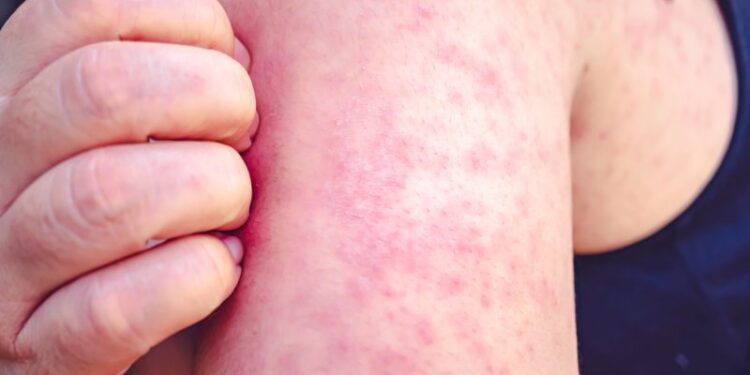
(NewsNation) — Public health officials have reported a spike in measles cases, particularly in the past two weeks.
Though not a seasonal virus, the severe, infectious rash is spread during high travel periods and in areas where unvaccinated people are in close quarters.
An outbreak was identified among unvaccinated individuals in West Texas this week.
Where are measles cases rising?
The Texas Department of State Health Services identified 24 measles cases with symptoms appearing in the past two weeks in Gaines County, Texas, which is on the state line bordering New Mexico.
All but two are children, nine have been hospitalized and all are unvaccinated.
“Due to the highly contagious nature of this disease, additional cases are likely to occur in Gaines County and the surrounding communities,” the department said in a news update.
The measles vaccine was introduced in 1963. At the time, an estimated 3 to 4 million people in the U.S. were infected annually, according to the Centers for Disease Control and Prevention.
The CDC recommends vaccinating children as early as 12 months old.
One confirmed measles case was reported Tuesday in Lea County, New Mexico, about 50 miles from Gaines County. The New Mexico Department of Health said the patient is a teenager who had no known previous exposure to the illness.
In Alaska, an unvaccinated man who returned from overseas travel was diagnosed with measles, according to a public health alert on Jan. 16.
On Jan. 18, the Rhode Island Department of Health announced the state’s first case since 2013.
The Georgia Department of Public Health announced an unvaccinated metro Atlanta resident tested positive for measles Jan. 28 and later identified two family members who also contracted the disease.
New York City has also reported measles cases.
Last year, 285 measles cases were reported, compared to just 59 in 2023, according to CDC data.
Measles symptoms: What to look for
Symptoms begin seven to 14 days after exposure. Initial symptoms include a high fever, cough, runny nose and red, watery eyes. Within a few days, tiny white spots called Koplik spots may appear in the mouth.
Three to five days after symptoms first appear, a rash of red spots will form first on the face and then spread down the rest of the body.
Fevers may spike past 104 degrees Fahrenheit once the rash is present.







